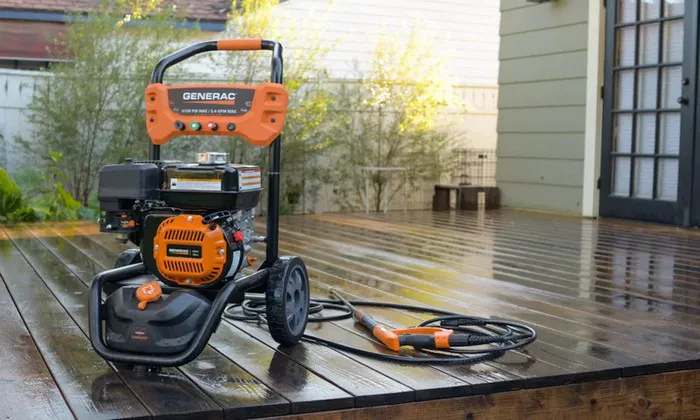In the realm of pressure washing services, determining the appropriate pricing structure is crucial for both meeting user needs and ensuring profitability. This article aims to provide a thorough understanding of the factors involved in pricing pressure washing services, offering insights into various pricing strategies, cost considerations, local market rates, profit margins, estimation tips, value proposition communication, and special services that may impact pricing decisions.
Pricing Strategies
When it comes to pricing pressure washing services, several strategies can be employed, each with its own set of advantages and considerations. Common pricing models include per square foot, per hour, or flat rate.
1. Per Square Foot: This model involves charging customers based on the total area to be pressure washed. It offers simplicity and transparency, as customers can easily understand the cost based on the size of the job. However, variations in surface types and complexities may lead to inconsistencies in pricing.
2. Per Hour: Charging per hour allows for flexibility, particularly when jobs vary in complexity or require additional time for preparation or specialized treatments. This model may be more suitable for tasks that are difficult to estimate in terms of duration.
3. Flat Rate: Offering a flat rate for specific services provides predictability for both the service provider and the customer. It simplifies the pricing process and can be advantageous for standard jobs with relatively consistent requirements.
Cost Factors
Several factors influence the costs associated with pressure washing services, affecting pricing decisions and profit margins.
1. Equipment: The quality and maintenance of pressure washing equipment significantly impact costs. Investing in high-quality machinery may initially incur higher expenses but can lead to greater efficiency and longevity, ultimately affecting the overall profitability of the business.
2. Labor: Labor costs encompass wages, benefits, training, and insurance. Skilled technicians may command higher wages, but their expertise can enhance the quality of service and customer satisfaction, thereby justifying higher prices.
3. Location: Regional economic conditions, market demand, and cost of living all influence pricing strategies. Areas with higher competition or affluent clientele may support higher pricing, whereas oversaturated markets may require more competitive rates to remain viable.
4. Type of Job: The complexity of the job, surface material, accessibility, and required treatments all impact costs. Specialized tasks such as graffiti removal or roof cleaning may command higher prices due to the expertise and resources involved.
Local Market Rates
Understanding local market rates is essential for setting prices that are both competitive and profitable. Researching competitors’ pricing structures and service offerings can provide valuable insights into prevailing market trends and consumer preferences.
1. Competitive Analysis: Analyzing the pricing strategies of competitors helps identify opportunities for differentiation and positioning within the market. It enables businesses to offer competitive rates while highlighting unique value propositions to attract customers.
2. Consumer Demand: Assessing consumer demand and willingness to pay allows businesses to tailor their pricing strategies to match market dynamics. Factors such as seasonal variations, demographic trends, and emerging customer preferences should be taken into account when determining pricing strategies.
Profit Margins
Calculating profit margins is essential for ensuring the long-term sustainability and growth of pressure washing businesses. Profit margins should be sufficient to cover all expenses, including equipment, labor, overhead costs, and desired profits.
1. Expense Analysis: Conducting a thorough analysis of all business expenses helps determine the minimum pricing required to cover costs and achieve profitability. It includes both direct costs, such as materials and labor, and indirect costs, such as marketing, insurance, and administrative expenses.
2. Desired Profit: Establishing a target profit margin allows businesses to set pricing goals and evaluate the viability of different pricing strategies. Profit margins should be competitive within the industry while providing adequate returns on investment and business growth opportunities.
Estimation Tips
Accurate estimation is critical for providing transparent pricing and managing customer expectations effectively. Employing best practices for estimating jobs ensures that pricing reflects the true value of the service provided.
1. Measurement Accuracy: Thoroughly measuring the area to be pressure washed helps avoid underestimating or overestimating the scope of work. Utilizing advanced measuring tools and techniques enhances precision and reduces the risk of pricing discrepancies.
2. Surface Assessment: Considering the type of surface and any special requirements enables service providers to tailor their approach and pricing accordingly. Different surfaces may require specific treatments or equipment, impacting both costs and pricing strategies.
Value Proposition
Communicating the value proposition effectively is paramount for justifying pricing to customers and distinguishing the business from competitors.
1. Quality Assurance: Emphasizing the quality of service, expertise of technicians, and use of environmentally friendly practices reinforces the value proposition and justifies premium pricing. Providing guarantees or warranties further enhances customer confidence and perceived value.
2. Customer Benefits: Highlighting the benefits of pressure washing, such as improved curb appeal, extended surface lifespan, and enhanced property value, helps customers understand the value proposition beyond the upfront cost. Demonstrating tangible outcomes and ROI strengthens the justification for pricing.
Special Services
Offering additional services can differentiate pressure washing businesses and influence pricing decisions.
1. Special Treatments: Providing specialized treatments such as mold remediation, stain removal, or surface sealing may warrant higher pricing due to the added expertise and materials required. Communicating the benefits and long-term value of these treatments justifies the incremental cost to customers.
2. Repairs and Maintenance: Addressing minor repairs or maintenance issues discovered during pressure washing tasks can add value to the service and enhance customer satisfaction. Incorporating these services into pricing ensures comprehensive solutions and reduces the need for additional contractors or follow-up visits.
Conclusion
In conclusion, pricing pressure washing services requires careful consideration of various factors, including pricing strategies, cost considerations, local market rates, profit margins, estimation tips, value proposition communication, and special services. By understanding the dynamics of the industry and aligning pricing strategies with customer needs and market conditions, pressure washing businesses can achieve sustainable growth and profitability while delivering exceptional value to their clients.

